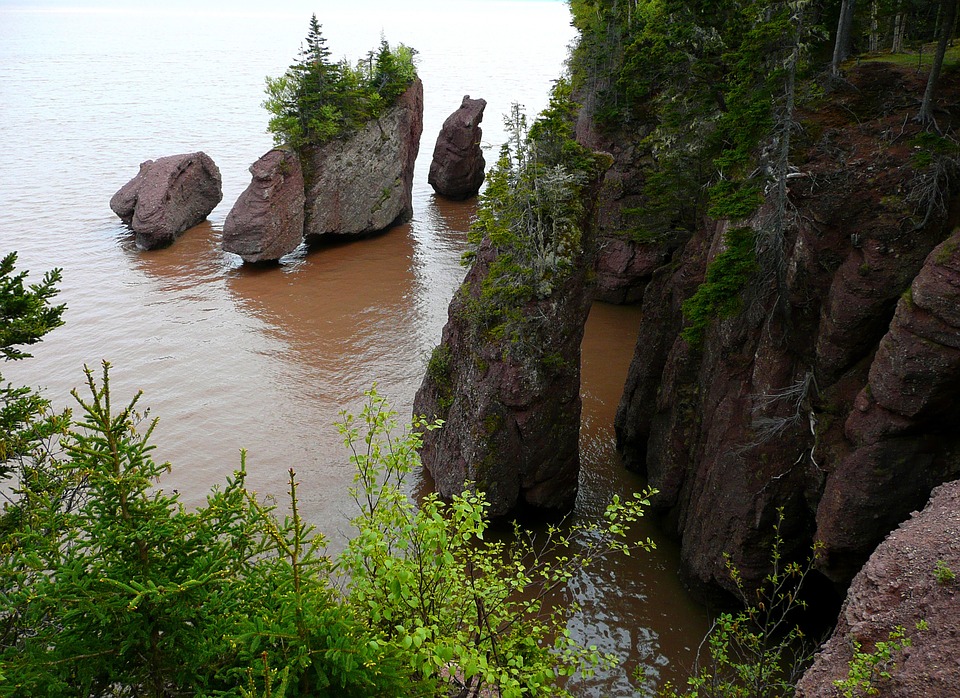15 overall new additions.
A stunning array of new sites have been designated UNESCO Global Geoparks, recognizing their “international geological significance”, UNESCO announced late last week. Canada, China, and Spain lead the pack with two new sites each while the rest of the additions come from individual countries. Nicaragua, Russia, and Serbia are “first time” inclusions while a geopark in Turkey was extended.
Rare Fossils
Four of the sites were added, in part, because of their contributions to the fossil record. Both Canadian sites–Cliffs of Fundy UNESCO Global Geopark and Discovery UNESCO Global Geopark–are added for this reason. At the Cliffs, fossils are a common sight, and include “early dinosaurs, vertebrates, and more”. At the Discovery Geopark, rocks dating half a billion years old have been found, with fossils representing the Ediacaran (~635 – 541 MYA) era. This is significant for two reasons: (1) this particular ‘layer’ is difficult to find, because it’s nowhere near as apparent as other eras of life and (2) because the creatures alive in this time are so different from the life we’re used to, with the most distinctive looking like worms and disks.
Ancient sea life, including trilobites, are part of the The Black Country UNESCO Global Geopark (United Kingdom), while dinosaur footprints are a notable inclusion in Spain’s Maestrazgo UNESCO Global Geopark. Turkey’s Kula-Salihli UNESCO Global Geopark, which is being extended as part of the announcement, is home to early humanoid fossils, including footprints. The birthplace of money, the Kingdom of Lydia, was found within its borders as well. China’s Xiangxi UNESCO Global Geopark contains a wealth of Cambrian era fossils and is one of the best places on Earth to understand that geological time.
Volcanic Remnants
Volcanoes played a key part in the formation of several of the geoparks. Indonesia’s Toba Caldera UNESCO Global Geopark, located on Sumatra Island, was formed by a volcanic eruption some 74,000 years ago. The volcanic lake sits 904 metres above sea level.
In South Korea, a volcanic eruption some 100,000 years ago created a so-called ‘lava plateau’ as the lava snaked its way through the mountains. Later on, a river would wind its way through the plateau, creating a beautiful, wholly distinct area now named Hantangang UNESCO Global Geopark. The Koreans are keenly aware of the benefits of having such a distinction: Government communications indicate a quadrupling of visitors to their first such park after the designation was bestowed.
Similarly, though much more recently, volcanic caves are central to Dak Nong UNESCO Global Geopark in Vietnam.
Early Peoples
Geology, geography, and people are all intertwined. Vietnam’s site acknowledges it was “originally inhabited by three indigenous peoples, the M’Nong, Ma and Ede” and today is home to over 40 cultural groups. Canada’s Mi’kmaq peoples are intertwined with the stories of the Cliffs of Fundy, even to this day, and the geopark commits to telling their story, the CBC reports.
“Our ancestors have been here for over 13,000 years according to archeological (sic) evidence. So it’s very exciting for the Mi’kmaq, our cultural centre and the recognition is going to be fantastic,” Donald Julien, executive director for The Confederacy Of Mainland Mi’kmaq, tells CBC.
China’s Xiangxi UNESCO Global Geopark reportedly “bears witness to a rich human history starting in the Paleolithic age and features 160 cultural sites…The area is now mainly inhabited by Tujia and Miao ethnic minorities, the earliest indigenous people living in Xiangxi Prefecture, whose rich history and culture have given rise to unique folk customs.”
Other sites hold early Neanderthal remains, cave dwellings, medieval fortresses, and more, though you’ll need to travel to Finland, Spain, and Serbia, respectively, to take in those sights.
A full list of the new designations can be found here.
Top image: Bay of Fundy (Hopewell Rocks) by ArtTower via Pixabay
